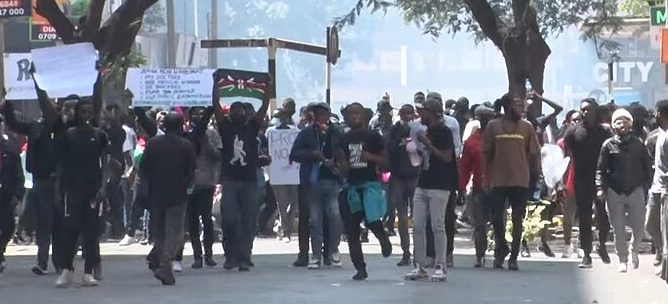Photos: YouTube
BERKELEY, CA—AUG. 11, 2021—As You Sow today released an updated Racial Justice Scorecard for the S&P500 which assesses companies on racial and environmental racism.
This benchmark distinguishes leaders from laggards on these material issues. The data includes 26 key-performance indicators on racial justice, including four new indicators specifically focused on environmental racism looking at corporate environmental violations, fines, and penalties since 2015, core products and services, as well as corporate actions.
The data is presented in an updated interactive data visualization tool, enabling sorting and comparisons by sector, market cap, number of employees, and geography. Each company is scored against its peers; any three companies can be overlaid for competitive comparison.
The Racial Justice Scorecard identifies best practices, encourages corporate leadership, informs shareholder advocacy, and exposes laggards in the transition to a more just society as featured in this TODAY Show segment.
The top 10 companies on the Racial Justice Scorecard include:
- Microsoft Corp.
- CVS Health Corp.
- General Motors Co.
- PVH Corp.
- Truist Financial Corp.
- Ingersoll Rand Inc.
- Huntington Bancshares Inc.
- Alphabet Inc.
- Progressive Corp.
- Hewlett Packard Enterprise Co.
The bottom 10 companies include:
- Mohawk Industries
- Kinder Morgan Inc.
- O’Reilly Automotive
- Valero Energy
- Nucor Corp.
- Martin Marietta Materials
- Marathon Petroleum
- Occidental Petroleum
- Berkshire Hathaway
- ExxonMobil
“Systemic racism extends beyond the corporate boardroom, permeating the built and social environments. As You Sow recognizes the critical importance of incorporating an environmental justice framework into our racial justice scorecards,” said Olivia Knight, racial justice initiative manager at As You Sow. “To hold companies responsible for their activities in perpetuating environmental racism, we must identify and acknowledge the existence and extent of the disproportionate harm that corporate actions inflict on communities of color. Our scorecard empowers shareholders, customers, and all stakeholders to hold companies responsible for continuing injustice. The four new data points identify harm that corporate products, services, and actions inflict on communities of color.”
Thirty-nine companies scored below zero, indicating they are doing more harm to communities of color than they make up for with positive actions. This metric demonstrates that environmental racism is a core component of corporate racial injustice. In addition, these “negative scoring” companies have had a less than stellar financial performance over the past five years. With 66% of the companies underperforming the S&P500 benchmark and 26% of them delivering negative five-year returns.
ExxonMobil, Eastman Chemical, and Valero all garnered negative scores in our new environmental racism KPIs.
ExxonMobil scored a -23%, placing them dead last at number 500 out of 500 in part due to their environmentally racist track record. One example is in the section of Beaumont, Texas, where 95% of the residents are African-American, the ExxonMobil refinery releases at least 135 toxic chemicals, many of which are known carcinogens, and is regularly noncompliant with the Clean Air Act. In spite of this, an U.S. Environmental Protection Agency (EPA) investigation, conducted 17 years after the initial complaints, resulted only in the placement of a single air monitor, placed further than a mile away from the plant.
Eastman Chemical’s score of -5%, placing them at 483 out of 500, is in part due to their actions in St. Gabriel, LA, also known as “Cancer Alley,” a plant that is owned and operated by their subsidiary, Taminco, to expand in the area. Approximately two-thirds of the 7,300 residents are Black, and the per-capita income is $15,000, about half the national average, in spite of the 30 large petrochemical plants located in the area. The cancer risk for residents is almost six times the national average for lifetime exposure.
Valero, which scored -10%, placing them at 491 out of 500, had proposed a pipeline to connect its refinery in Memphis, TN, to the Gulf Coast with plans to skirt the outside of the predominantly white suburbs to the north, but ran 7 miles of the line directly through the southwest neighborhoods which are 97% Black and where the outdated refinery is located.
In rare good news, the proposed pipeline was canceled due to intense public opposition. While Valero is a large local employer, it is also a major local polluter. Recent flares and leaks from the outdated refinery continue to plague the area. Studies show residents have a cancer risk four times the national average and the median income is only $31,000.
Marathon Petroleum is among the bottom 10 with a score of -17%, placing them at 497 out of 500 due to its history of environmental violations impacting Black and Brown communities. In spite of a 2016 settlement with the EPA, communities surrounding the refineries in Southwest Detroit continue to experience toxic pollution causing disproportionately high rates of cancer and asthma. Repeated vapor releases and chemical leaks prompted a request for a formal EPA investigation in 2019.
Marathon recently announced it would spend $5 million to buy homes from residents in the Boynton neighborhood in the immediate area of the refinery who want to escape the toxic environment. In 2012, Marathon offered above-market prices for homes in another, predominantly white community but refused to extend the same offer to the residents in the Boynton neighborhood which is in the most polluted ZIP code in the state. It was only under pressure from legislators and consumers that Marathon has agreed to create a buffer zone between its refineries and the surrounding neighborhoods. It will remain to be seen how equitable or timely this action will turn out to be and whether Marathon’s future actions can atone for its destructive past.
The results also are underscored by the serious lack of diversity, equity, and inclusion disclosure, which prevents a clear understanding of the scope of racial disparity in the largest companies in the U.S. Disclosure of this data is critical to establish best practices to build a just and diverse culture and eradicate systemic racism. In the last year, however, release (or commitments to release) meaningful data on the effectiveness of corporate diversity programs has significantly increased.
For example, in August 2020, only 20 companies in the S&P100 released their consolidated EEO-1 forms, the best practice standard to share workforce composition statistics. In the past 12 months, an additional 58 companies released, or committed to release, this data set. Corporate disclosure of data related to the inclusiveness of their workplaces has also increased, with companies moving towards disclosure of their hiring, retention, and promotion rates by gender, race, and ethnicity. However, our research found that only 27 companies explicitly acknowledged a connection between environmental justice and their business practices.
Today’s release marks the continuation of As You Sow’s initiative to engage directly with corporations and eradicate systemic racism embedded in corporate policies and practices. Since the initial release of the S&P500 racial justice scorecard in March, dialogues have continued with laggard companies. The scorecard serves to highlight areas for improvement as well as providing opportunities for peer comparisons. With the addition of the environmental racism key performance indicators, the dialogue on racial justice will be broadened to address core corporate products and strategies.
“It is long past time we make race the central issue when talking about environmental justice,” said Renee Morgan, social justice strategist at Adasina Social Capital. “In the U.S., race is the biggest indicator of whether you live near toxic waste. Also, areas with higher temperatures within U.S. cities are the same cities that were segregated decades ago, as such air pollution and extreme heat are the leading cause of death to communities of color in urban areas.
“In every instance, the people most harmed by environmental ills can be identified by race, even more than class. Centering the people most impacted by environmental harm will offer clarity and the solutions we need to have a future. We know this tool is a work in progress and will get better and represent more justice as we demand corporations be accountable to their promises of racial justice.”






